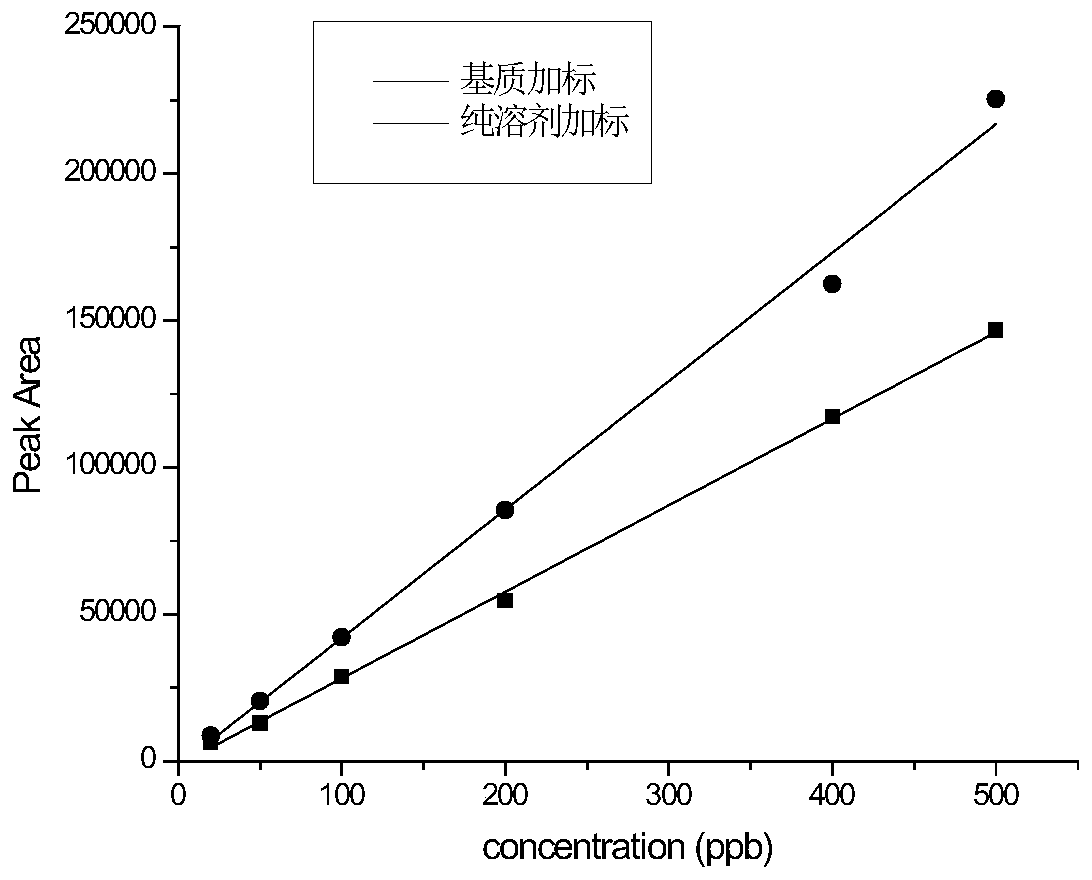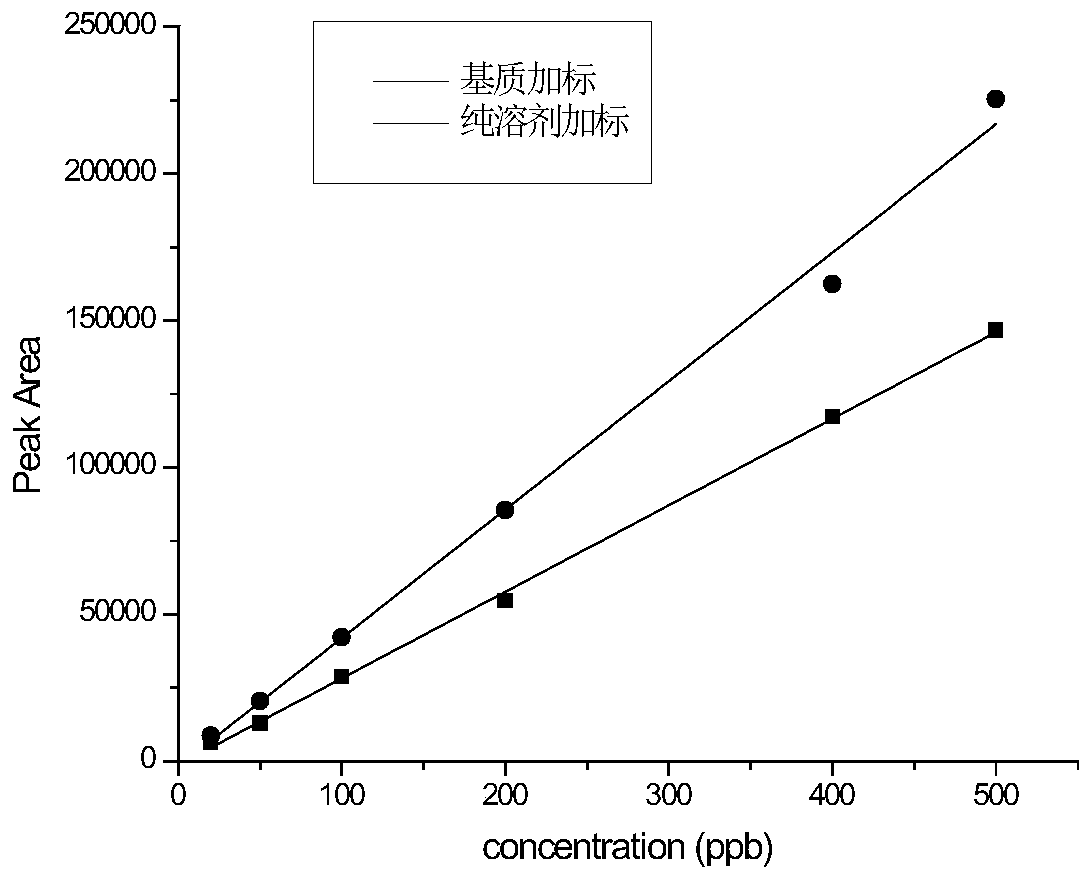Method for detecting and analyzing chlorothalonil residues in water environments
An analytical method and chlorothalonil technology, applied in the field of detection, can solve problems such as inability to accurately analyze the content level of chlorothalonil, and achieve the effects of improving sensitivity, simple operation, and reducing mass spectrometry conditions.
- Summary
- Abstract
- Description
- Claims
- Application Information
AI Technical Summary
Problems solved by technology
Method used
Image
Examples
Embodiment 1
[0062] (1) Water sample pretreatment
[0063] ①Take 100mL water sample, filter it through a 0.45μm filter membrane, put it in a 250mL separatory funnel, then add 10g sodium chloride, after it dissolves, add 10mL n-hexane, shake vigorously on a shaking table for 10min, and let it stand for 30min to separate layers Finally, transfer the extract to a 50mL plastic centrifuge tube, repeat the extraction once, and combine the extracts to obtain Extract 1;
[0064] ② Weigh 10g of anhydrous sodium sulfate and place it in a funnel with filter paper, rinse it with n-hexane, discard the eluent, then pass the extract obtained in step (1) ① through the funnel, and wash it with the extractant 2 times to obtain the washing solution, pass the above-mentioned extract one and the washing solution through the funnel through the drying column to obtain the extract two, and place them in a chicken heart bottle;
[0065] ③Rotary evaporate the extract solution 2 to 2-3mL, then wash the heart bottle...
Embodiment 2
[0078] Compared with Example 1, the only difference is that the extraction solvent n-hexane is replaced by methanol, and other conditions and operations are the same as in Example 1.
[0079] In this example, the detection limit is 0.012 μg / L.
Embodiment 3
[0081] Compared with Example 1, the only difference is that the extraction solvent n-hexane is replaced by a 1:1 mixed solvent of methanol and n-hexane, and other conditions and operations are the same as in Example 1.
[0082] In this example, the detection limit is 0.012 μg / L.
PUM
 Login to View More
Login to View More Abstract
Description
Claims
Application Information
 Login to View More
Login to View More - R&D Engineer
- R&D Manager
- IP Professional
- Industry Leading Data Capabilities
- Powerful AI technology
- Patent DNA Extraction
Browse by: Latest US Patents, China's latest patents, Technical Efficacy Thesaurus, Application Domain, Technology Topic, Popular Technical Reports.
© 2024 PatSnap. All rights reserved.Legal|Privacy policy|Modern Slavery Act Transparency Statement|Sitemap|About US| Contact US: help@patsnap.com










